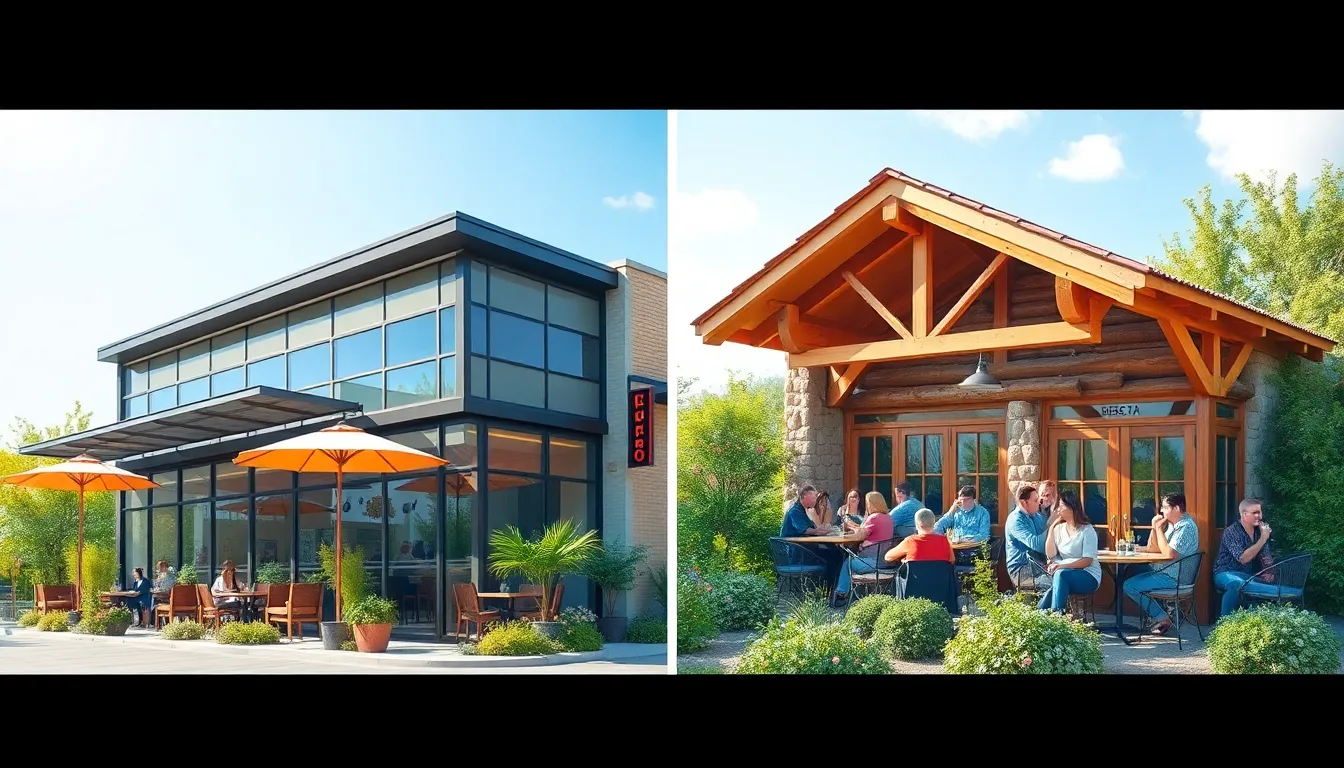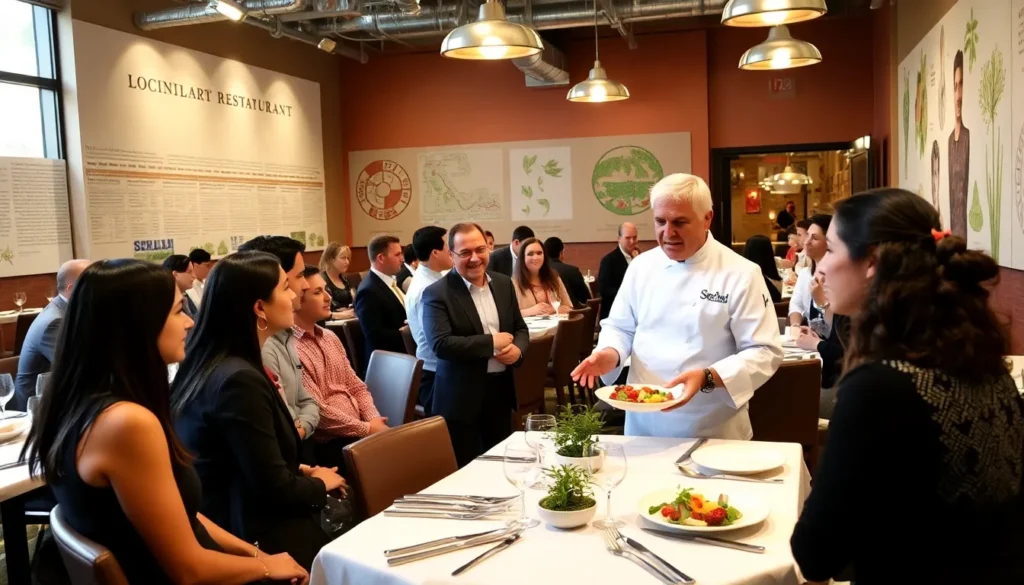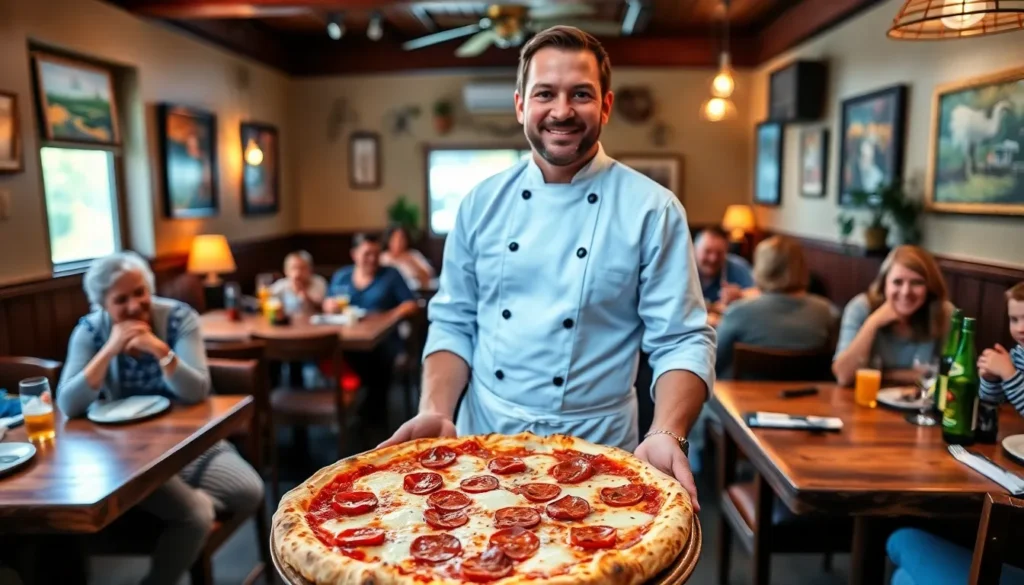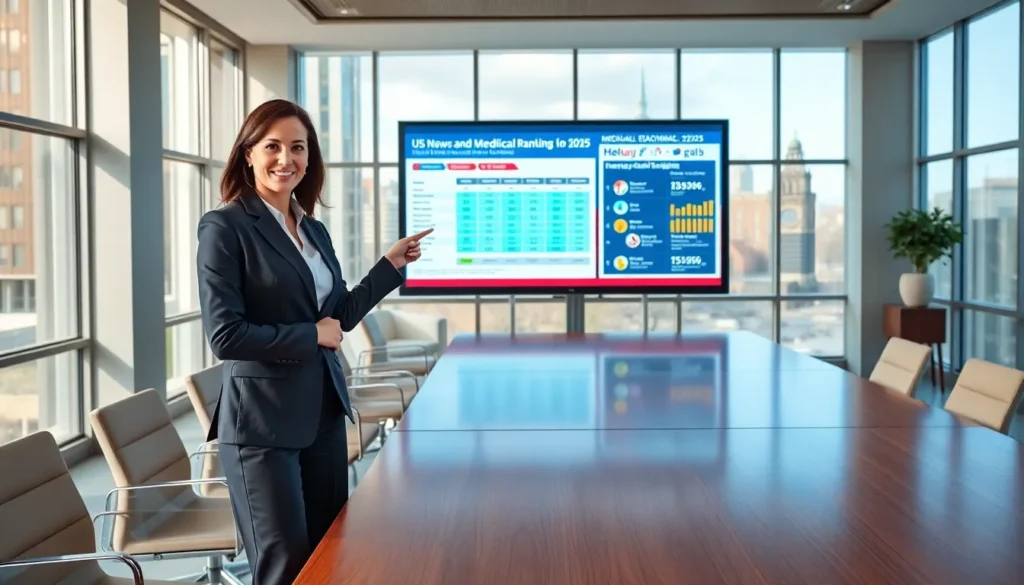Table of Contents
ToggleImagine walking into a restaurant that feels just as good as the food tastes. The right building design can create an unforgettable experience, turning a simple meal into a cherished memory. In the competitive world of dining, restaurant buildings are not just structures: they are reflections of brand identity, culinary creativity, and customer experience. So, let’s jump into why the design of restaurant buildings is crucial, with a pinch of humor to keep things interesting.
Importance Of Design In Restaurant Buildings

When it comes to restaurant buildings, design plays a critical role. A well-thought-out design doesn’t just catch the eye: it enhances the dining experience and can even influence customer behavior. Research shows that ambiance accounts for up to 40% of a customer’s overall satisfaction with a meal. That’s a hefty number. A unique exterior can draw in foot traffic while a thoughtfully arranged interior can ensure customers linger just a bit longer, enjoying that second dessert while turning over the menu for the third time.
Also, effective design also embodies the restaurant’s brand. Think about it: a cozy, rustic cabin in the woods communicates a different vibe than a sleek, modern bistro downtown. Every layout choice, color palette, and decor piece works together to tell a story, so having a cohesive design is essential.
Key Features Of Functional Restaurant Designs
Functional designs are not just about aesthetics: they consider practicality as well. Here are some key features that define a functional restaurant design:
Customer Flow
A good layout considers how customers navigate the space. It minimizes bottlenecks during busy hours while providing comfortable seating arrangements. It allows diners to find their way to the restroom without needing a map.
Kitchen Layout
The kitchen isn’t just the heart of the restaurant: its design impacts efficiency. Open kitchens can create a sense of transparency, but they need to be organized enough that chefs aren’t tripping over each other while trying to craft that perfect dish.
Lighting
Good lighting can change the entire mood. Soft lighting can make a romantic dinner feel intimate, while bright lighting promotes a lively atmosphere for family gatherings.
Acoustics
Let’s face it: nobody enjoys shouting over the sound of clattering dishes or other patrons’ conversations. Proper acoustics can elevate the dining experience and make meals more enjoyable.
Sustainable Practices In Restaurant Building Construction
Sustainability isn’t just a buzzword for restaurants: it’s an essential part of modern restaurant design. Eco-friendly practices in building construction can significantly impact energy consumption and waste reduction. Here are a few sustainable practices:
Use of Reclaimed Materials
Utilizing reclaimed wood or recycled metals can give a restaurant a unique flair. Plus, it decreases demand for new materials, good for the planet.
Energy-Efficient Appliances
Implementing appliances that consume less energy not only cuts costs but contributes to lower carbon footprints. That’s a win-win.
Natural Lighting
Incorporating large windows and skylights can minimize the need for artificial lighting during the day. So, diners can not only feast on great food but also soak in some natural beauty.
Trendy Architectural Styles For Restaurants
Restaurant architecture often reflects current trends, and understanding these can help business owners make informed design choices. Here are some popular architectural styles:
Industrial Chic
Think exposed brick, open spaces, and metal fixtures. Industrial-style restaurants offer a raw, urban vibe that many find appealing.
Minimalist Design
Less is more. Clean lines and simple decor make for a calm eating environment. This style is becoming increasingly popular in highly urban settings.
Mediterranean Revival
With a focus on bright colors and floral designs, Mediterranean architecture brings warmth and charm, making diners feel right at home.
Staying on top of these trends can help a restaurant stand out and attract new clients.
The Role Of Technology In Modern Restaurant Buildings
Technology has become an indispensable part of modern dining experiences. Here’s how technology is changing the landscape:
Smart Layouts
With the help of design software, architects can create layouts that optimize both the kitchen and dining areas based on customer behavior data.
Digital Menus
Screens displaying menus not only save paper but can also be updated easily with seasonal offerings or specials without requiring a reprint.
Contactless Payments
In a post-pandemic world, technology ensures that restaurants can serve customers safely and efficiently, so increasing overall satisfaction.
Challenges In Restaurant Building Projects
Every restaurant building project comes with its own set of challenges. Here are some common hurdles:
Budget Constraints
Sticking to a budget can be extremely challenging, especially when unexpected costs arise. That perfect bar stool can suddenly turn into a budget buster.
Site Restrictions
Local zoning laws can limit design options and expansion plans. This can be a major headache for owners trying to realize their vision.
Project Delays
Whether it’s due to weather, regulations, or supply chain issues, delays can throw timelines off course and impact the overall success of the restaurant.
Future Trends In Restaurant Building Design
Looking ahead, several trends appear poised to shape the future of restaurant buildings:
Adaptive Reuse
Repurposing old buildings can breathe new life into neighborhoods while retaining their historic charm. This approach can also be more cost-effective than new constructions.
Biophilic Design
Bringing nature indoors is gaining popularity. Think living walls, indoor gardens, or large windows that frame beautiful outdoor vistas. Dining in a restaurant that feels like a garden can enhance the customer experience significantly.
Modular Construction
As the restaurant industry adapts, modular construction techniques can allow for faster builds at lower costs. Flexibility is key in an ever-changing market.










